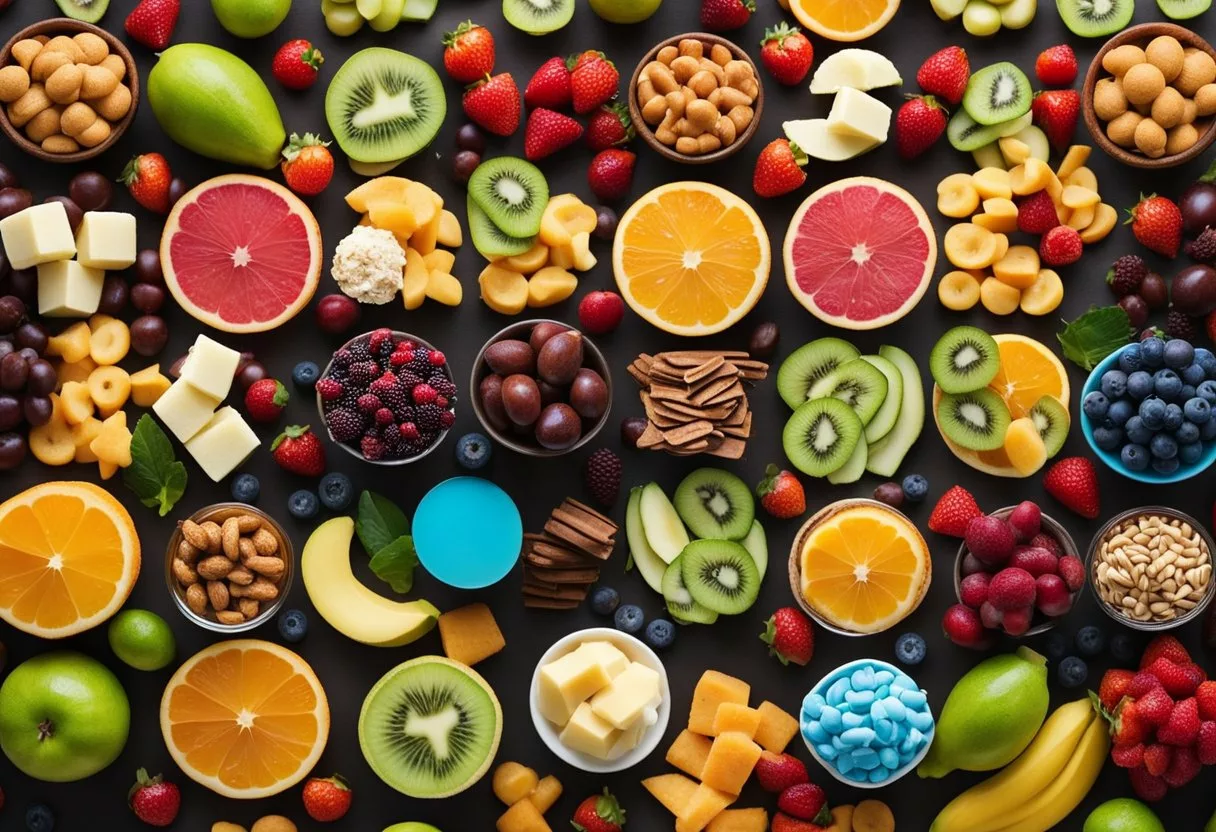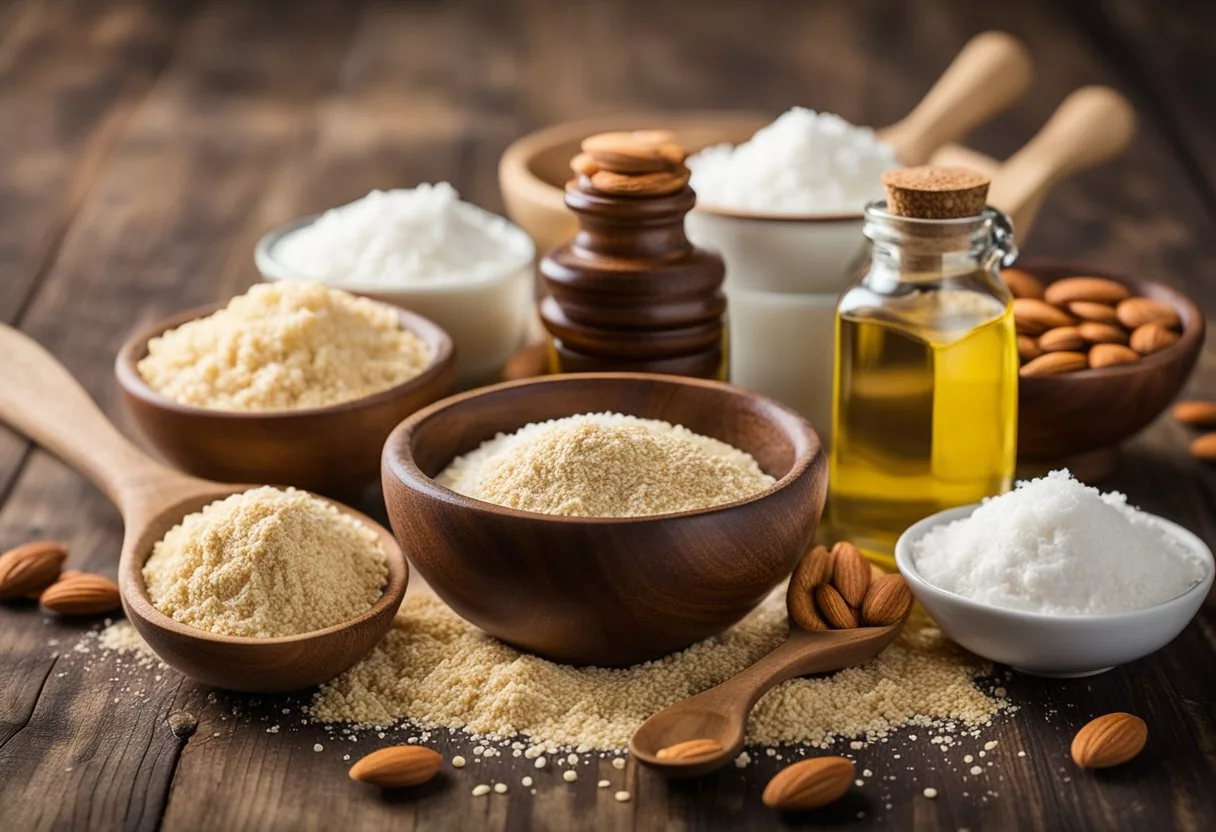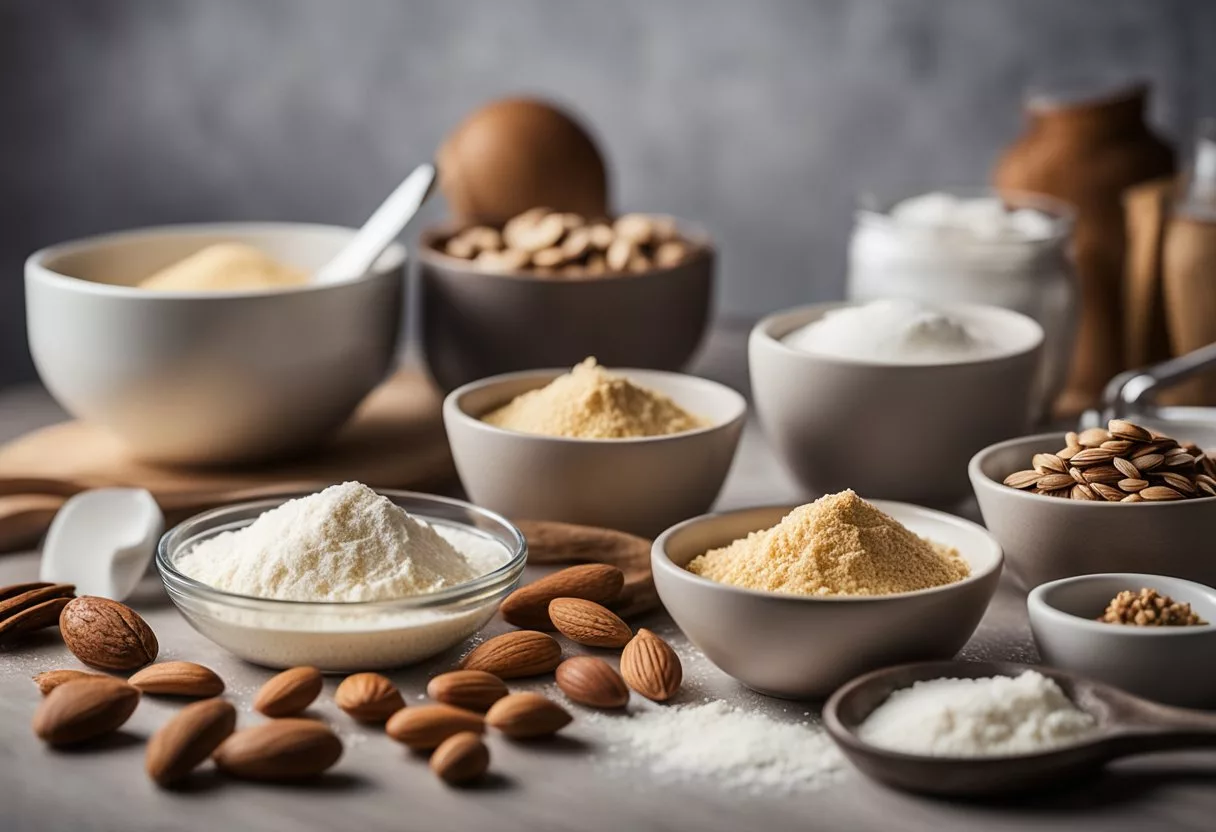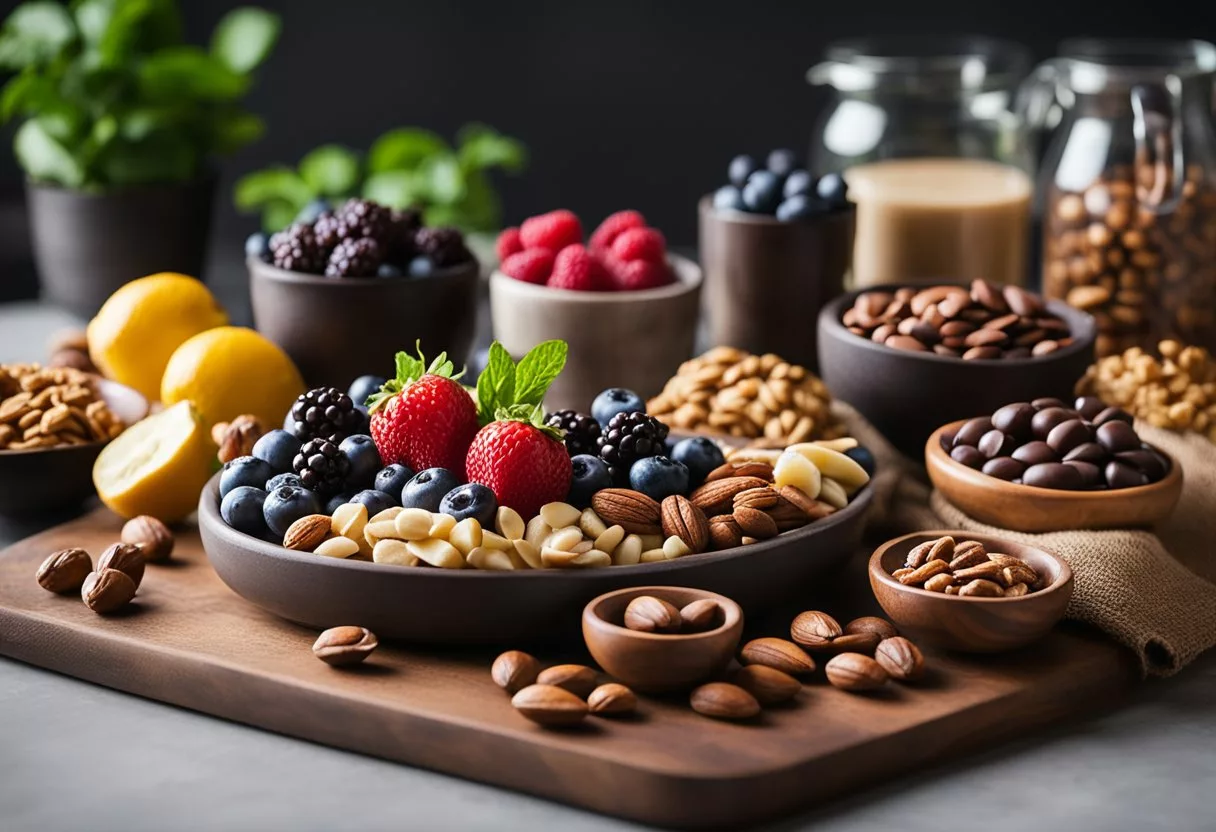The ketogenic, or keto, diet is a popular low-carb, high-fat eating plan that has gained attention for its potential health benefits, including weight loss and improved blood sugar control.
While the diet restricts high-carb foods, which includes most traditional desserts, it does not mean that those with a sweet tooth need to give up on desserts entirely. Innovation in recipes and ingredients has made it possible to enjoy sweets and treats while maintaining ketosis, the metabolic state where the body burns fat for energy instead of carbohydrates.

Creating keto-friendly desserts involves using alternative sweeteners that don’t spike blood sugar, such as stevia, erythritol, or monk fruit sweetener. These ingredients allow for sweet flavors without compromising the diet’s low-carb requirement.
Moreover, understanding keto baking essentials, like almond flour or coconut flour in place of wheat flour, plays a crucial role in crafting delicious and healthy desserts. With a vast array of recipes available, from pumpkin cheesecake to chocolate mousse, adhering to a keto lifestyle can be both nutritious and indulgent.
Key Takeaways
- Desserts can be adapted to fit a keto diet through the use of low-carb, sugar-free ingredients.
- Alternative flours and sweeteners are essential for creating keto-friendly baked goods.
- A variety of recipes exist to cater to sweet cravings without breaking ketosis.
Understanding the Keto Diet

In addressing the intricacies of the keto diet, one must consider its foundational principles, health advantages, and critical macronutrient ratios. This section provides a concise exploration of these components.
What is Keto?
The ketogenic, or keto, diet is a high-fat, low-carbohydrate eating plan. On this diet, an individual’s intake of carbohydrates is drastically reduced, and replaced with healthy fats. This reduction in carbs puts the body into a metabolic state called ketosis, where fat is burned for energy instead of glucose. Net carbs, the total carbs minus fiber and sugar alcohols, are typically limited to 20-50 grams per day to maintain this state.
Benefits of Keto
Adherents of the keto diet may experience several benefits, including:
- Weight loss: By utilizing fat as the primary energy source, the body may lose weight more efficiently.
- Blood sugar control: The diet’s low-carb nature can lead to more stable blood sugar levels, which is beneficial for individuals with diabetes.
- Improved mental focus: Some individuals report enhanced clarity and concentration due to the steady fuel provided by ketones.
- Increased energy: After the body adapts to ketosis, energy levels can become more consistent, without the spikes and dips associated with high-carb diets.
Keto Macronutrient Ratios
The keto diet emphasizes specific macronutrient distributions, which are typically as follows:
- Fats: 70-80% of total daily calories
- Proteins: 20-25%
- Carbohydrates: 5-10%
It’s critical to consume healthy fats such as avocados, coconut oil, and nuts, while proteins are sourced from meats, fish, and dairy products. Carbohydrate intake is highly restricted to low-carb vegetables and certain dairy products to maintain ketosis.
Fundamentals of Keto Sweets

Creating keto sweets requires a careful balance of ingredients that align with the low-carb, high-fat ketogenic diet. Key to success are the right sweeteners, high-quality keto-friendly flours, and healthy fats that provide both taste and nutritional value.
Role of Sweeteners in Keto Sweets
Sugar-free sweeteners are crucial in keto dessert recipes as they replace sugar, which is high in carbohydrates. Popular natural sweeteners include:
- Stevia: A zero-calorie sweetener derived from the leaves of the Stevia rebaudiana plant.
- Erythritol: A sugar alcohol that has minimal impact on blood sugar levels.
- Monk Fruit Sweetener: Made from monk fruit extract, it provides sweetness without calories or carbs.
These sweeteners do not only serve to sweeten but also often provide bulk and texture to desserts.
Selecting Keto-Friendly Flours
Traditional wheat flours are high in carbs, thus not suitable for keto baking. Instead, keto recipes use low-carb flour alternatives, such as:
- Almond Flour: A grain-free flour rich in protein and fiber.
- Coconut Flour: Densely packed with fiber, it has a higher absorption rate requiring adjustment in recipes.
Almond and coconut flours are the go-to choices because they help create a desirable consistency while keeping the carb count low.
Incorporating Healthy Fats
In keto desserts, the role of fat is not just to add richness but also to keep the body in a state of ketosis. Some common sources of healthy fats in keto sweets are:
- Fat bombs: These are treats typically made with ingredients like coconut oil or cream cheese, designed to provide a concentrated dose of healthy fats.
- Butter or Ghee: These are often used in baking for their high-fat content and ability to create a tender crumb in baked goods.
Using healthy fats in keto sweets supports the metabolic state of ketosis, while simultaneously enhancing flavor and texture.
Key Ingredients in Keto Desserts

Choosing the correct key ingredients is crucial for successful keto desserts, as they must conform to low-carb, high-fat dietary requirements while satisfying sweet cravings.
Sugar Alternatives
Sugar-free sweeteners are the cornerstone of keto desserts, replacing traditional sugar to maintain sweetness without the carbohydrates. Common sweeteners include:
- Stevia: A natural sweetener derived from the leaves of the Stevia rebaudiana plant.
- Erythritol: A sugar alcohol with minimal caloric impact, it doesn’t spike blood sugar.
- Monk Fruit Sweetener: Extracted from monk fruit and often blended with erythritol to balance sweetness.
Keto Chocolate Essentials
Chocolate is integral to many desserts, but on a keto diet, one should opt for chocolate with high cocoa content and no added sugars:
- Dark Chocolate: With at least 70% cocoa, it provides rich flavor with minimal carbs.
- Cocoa Powder: Make sure it’s unsweetened for pure chocolate taste without extra carbs.
Eggs and Dairy in Keto Baking
Eggs and dairy products play a crucial role in adding structure, richness, and flavor to keto desserts.
- Eggs: They’re essential for binding ingredients together and adding moisture.
- Heavy Cream: Provides a creamy texture and richness to dishes like mousses and custards.
- Dairy: Full-fat versions of butter, cream cheese, and sour cream offer both taste and necessary fat content. Vanilla extract is also frequently used to enhance the flavor without increasing carb count.
Keto-Friendly Sweet Treat Recipes

For those following a ketogenic diet, sweet treats are not off-limits. There are numerous recipes that have been adapted for the keto lifestyle, allowing for indulgence without breaking the dietary rules. These treats use ingredients like almond flour, erythritol, and cream cheese to maintain low net carbs.
Classic Keto Cheesecake
A Classic Keto Cheesecake is rich, creamy, and satiating. It often has a crust made from almond flour or crushed nuts, which complements the smoothness of a filling consisting mainly of cream cheese and eggs. This dessert is topped with a sweetener like erythritol or stevia to keep it keto-friendly. For an added twist, one might blend in tart raspberries to create a Raspberry Cheesecake variety.
Decadent Keto Chocolate Desserts
Keto offers a plethora of Decadent Keto Chocolate Desserts. One popular option is the Keto Chocolate Cake, moist and fluffy, often using almond or coconut flour. Another staple are Keto Chocolate Chip Cookies, which substitute traditional sugar with sweeteners like monk fruit and swap white flour for a low-carb alternative, delivering the classic cookie experience without the guilt.
Refreshing Keto Fruit Delights
For a lighter option, Refreshing Keto Fruit Delights make use of the natural sweetness in fruit while keeping an eye on the carb count. Keto Lemon Bars are a zesty treat, perfectly balancing tart lemon curd with a buttery almond flour crust. For the fruit enthusiasts, creating a simple fruit salad with keto-appropriate fruits like berries can be both refreshing and satisfying, aligning with the ketogenic framework.
Specialized Keto Delicacies

Keto sweets and treats cater to a variety of dietary preferences, including those who avoid dairy or nuts. Each recipe is tailored to maintain the low-carb hallmark of a ketogenic diet while delivering the indulgence of a dessert.
Dairy-Free Keto Desserts
For individuals avoiding dairy, coconut milk and coconut cream serve as fantastic substitutes to create creamy, dairy-free keto desserts.
- Dairy-Free Chocolate Mousse: A rich dessert using coconut cream, unsweetened cocoa powder, and a keto-friendly sweetener like stevia or erythritol, whipped to perfection.
- Lemon Coconut Fat Bombs: These zesty treats combine coconut oil, lemon zest, and shredded coconut for a refreshing and satisfying bite. They are gluten-free and simple to make.
Nut-Free Keto Treats
Navigating a ketogenic diet without nuts is manageable with recipes that focus on nut-free ingredients for those with allergies or preferences.
- Nut-Free Keto Brownies: These decadent treats use coconut flour instead of almond flour, ensuring a gluten-free and nut-free dessert that doesn’t compromise on taste or texture.
- Peanut Butter Cookies: While peanuts are technically legumes, not nuts, some individuals may still include them in a nut-free diet. These cookies can be made using a sugar-free peanut butter and sweetener like xylitol, for a classic, chewy treat.
Creating Textured Keto Treats

Crafting delightful keto treats that satisfy different texture cravings is essential for those following a ketogenic diet. This section provides insightful methods for creating treats that range from rich and creamy to chewy and soft.
Keto Fat Bombs and Candies
Keto Fat Bombs are a staple for those seeking a high-fat snack with satisfying texture. A popular choice is Coconut Fat Bombs, combining unsweetened shredded coconut with a base of cream cheese or coconut oil, typically sweetened with a keto-approved sweetener such as stevia or erythritol. They excel in providing a quick fatty snack with a pleasant, crumbly texture.
- Ingredients for Coconut Fat Bombs:
- Unsweetened shredded coconut
- Cream cheese or coconut oil
- Keto-approved sweetener
Keto Candies, on the other hand, include treats like keto fudge, made by melting together a high-fat content dairy product, such as cream cheese or butter, with unsweetened cocoa powder and a sweetener. The result is a smooth consistency that hardens into bite-sized indulgences that rival traditional chocolate fudge.
- Basic Keto Fudge Components:
- High-fat dairy product (e.g., cream cheese, butter)
- Unsweetened cocoa powder
- Keto sweetener (e.g., erythritol, stevia)
Chewy and Soft Keto Confections
For those preferring a chewy bite, Keto Cookie Dough is an excellent option. This treat often uses almond or coconut flour as a substitute for traditional wheat flour, and because it’s generally consumed raw, the dough retains a satisfying, chewy texture.
- Keto Cookie Dough Essentials:
- Almond or coconut flour
- Keto sweetener
- Butter or almond butter
- Sugar-free chocolate chips
Transitioning to soft confections, Chocolate Mousse provides a light, airy texture unmatched by denser treats. It utilizes whipped heavy cream, sugar-free cocoa powder, and a mild sweetener, folding these ingredients into a delicate, cloud-like dessert.
- Chocolate Mousse Ingredients:
- Whipped heavy cream
- Sugar-free cocoa powder
- Sweetener
Keto Hot Chocolate, when made with almond milk and heavy whipping cream, can be transformed into a thick and velvety drink that not only warms but provides a creamy texture that’s both comforting and luxuriously soft.
- Keto Hot Chocolate Recipe:
- Almond milk
- Heavy whipping cream
- Unsweetened cocoa powder
- Keto sweetener
By carefully selecting the right ingredients and combining them thoughtfully, one can enjoy an array of textures within keto-friendly sweets and treats. Whether seeking the richness of fat bombs and fudge or the softness of mousse and chewy cookie dough, texture plays a pivotal role in creating an enjoyable keto confectionery experience.
Seasonal Keto Dessert Options

Adapting to a ketogenic diet doesn’t mean missing out on the festive flavors of the seasons. This section guides you through the essential recipes and ingredients for creating keto-friendly desserts that align with autumn festivities and holiday cheer.
Autumnal Keto Delights
With the arrival of fall, the palate yearns for warm spices and comforting flavors. Enter Keto Pumpkin Cheesecake, a luscious dessert that combines pumpkin puree with cinnamon and a hint of salt for a perfect balance. Form the crust with almond flour and sweeten with a keto-compliant sweetener to keep everything low in carbs.
- Keto Pecan Pie: Substitute the traditional corn syrup with a blend of sugar-free maple syrup and your choice of keto sweetener. Almond flour crust and plenty of whole pecans create a satisfying crunch that doesn’t compromise dietary goals.
Keto Holiday Sweets
The holidays demand decadence, and a well-crafted Keto Brownie delivers. Employ almond or coconut flour as the base, enrich with unsweetened cocoa powder, and ensure each morsel is sweetened only with substances that adhere to ketogenic principles – like erythritol or stevia.
- Spices: Generous measures of cinnamon, nutmeg, and ginger can imbue a simple keto-friendly dough with the essence of the holidays, perfect for cookies and other small treats.
Each seasonal dessert upholds the traditional essences while aligning with keto diet restrictions, ensuring celebrations remain joyous and guilt-free.
Baking Techniques and Tips

When embarking on keto baking, having the right techniques and understanding the characteristics of key ingredients is essential. Accuracy is crucial as is an openness to exploring alternative ingredients that comply with a low-carb lifestyle.
Perfecting Keto Pie Crusts
Creating a keto pie crust can be a delightful experience when one knows how to handle the alternative flours and fats. Coconut flour is a frequent player in the keto crust repertoire, praised for its high fiber content and low carb count. It tends to absorb more moisture than other flours, so adjustments in liquid ingredients are necessary to avoid a dry crust.
To achieve a flaky texture, maintain the fats used in the dough – such as butter or coconut oil – in a solid state, and mix minimally to prevent the development of gluten which is absent in keto-friendly flours. The use of cold water can help in keeping the fats from melting during the preparation. A well-made keto pie crust should be:
- Prebaked for best results, ensuring it can hold the filling without becoming soggy.
- Crafted with a 1:4 ratio of coconut flour to almond flour to prevent crumbling.
Mastering Keto Cakes and Cookies
For keto cakes and cookies, almond flour is often the base due to its finer texture and neutral flavor. However, when it comes to something specific like keto chocolate chip cookies, the right combination of almond flour, a binder like xanthan gum, and keto-friendly chocolate chips must be used for that perfectly chewy texture.
Keto cookie dough should not be overworked to prevent the cookies from becoming tough. Monk fruit, a natural sweetener, can be used to add sweetness without the carbs that regular sugar would contribute. It’s important to note the sweetness level of monk fruit is higher than sugar, so one should adjust the quantity accordingly.
For the best results, bakers might employ:
- Almond flour, for its friendly consistency and taste.
- Xanthan gum, often just half a teaspoon, to improve dough elasticity.
- Alternative sweeteners like monk fruit or erythritol to achieve desired sweetness.
- Baking temperatures slightly lower than traditional recipes to prevent over-browning, with a range around 325°F to 350°F (163°C to 177°C).
Nutrition and Keto Desserts

In the realm of ketogenic confections, a meticulous approach to balancing macronutrients and understanding the interplay between net carbs and fiber ensures these treats support the stringent dietary requirements of keto followers.
Balancing Macronutrients
Keto desserts prioritize fat and protein while minimizing carbohydrates to align with the metabolic state of ketosis. A well-crafted keto sweet treat will often incorporate sources of healthy fats such as almonds, coconut, or MCT oil, providing the majority of calories. Protein is also a key component but in moderate amounts, sourced from ingredients like almond flour or cream cheese. The goal is to mimic traditional desserts while maintaining a macronutrient profile that adheres to keto guidelines.
Understanding Net Carbs and Fiber
In keto, net carbs are calculated by subtracting the grams of fiber from the total grams of carbohydrates. This is pivotal because fiber does not significantly impact blood sugar levels, allowing for a clearer assessment of a dessert’s keto compliance.
| Total Carbs (g) | Fiber (g) | Net Carbs (g) |
|---|---|---|
| 20 | 15 | 5 |
The above table demonstrates how a high-fiber dessert may have a higher total carb count but remains low in net carbs, making it suitable for a ketogenic diet. Selecting ingredients with low net carbs is crucial, such as using sweeteners like stevia, erythritol, or monk fruit that do not contribute to net carb load while delivering the desired sweetness.
Keto Dessert Variations

The keto diet has unlocked a treasure trove of guilt-free desserts that cater to low-carb lifestyles without skimping on flavor. The following subsections delve into the rich and creamy world of keto mousse and puddings, as well as the inventive realm of hot and cold keto beverages.
Exploring Keto Mousse and Puddings
Keto-friendly mousses and puddings often feature ingredients like coconut milk and unsweetened cocoa powder, providing a decadent texture without the surplus carbs. The chocolate mousse, for instance, can be crafted using heavy cream whipped with cocoa and a keto-approved sweetener, often accompanied by a hint of lemon juice for brightness. These desserts can be served as a luxurious end to a meal or a satisfying treat throughout the day.
- Ingredients for Chocolate Mousse:
- Heavy cream
- Unsweetened cocoa powder
- Keto-friendly sweetener
- Optional: lemon juice
- Pudding Variations:
- Vanilla pudding with a splash of coconut milk
- Chia seed pudding infused with vanilla and coconut milk
Innovative Hot and Cold Keto Beverages
Moving beyond solid desserts, keto diet adherents also have an array of beverage options to satisfy cravings. The versatile keto hot chocolate stands out, made with unsweetened cocoa powder and a sweetener like stevia or erythritol. It can be served piping hot or chilled over ice, depending on the season or personal preference.
Keto Hot Chocolate Recipe:
- Hot Version:
- Heat up unsweetened almond or coconut milk.
- Whisk in unsweetened cocoa powder and sweetener.
- Optional: Add a dollop of heavy cream for extra richness.
- Cold Version:
- Prepare the hot chocolate mix and allow it to cool.
- Pour over ice and top with a splash of heavy cream.
Leveraging these alternatives allows individuals following the ketogenic diet to enjoy sweet treats and comforting beverages without disrupting their nutritional goals.
Supplemental Keto Ingredients

In the realm of keto sweets and treats, the right supplemental ingredients are pivotal in achieving the desired taste, texture, and nutritional content without compromising the low-carb ethos.
Alternative Dairy and Sweeteners
Dairy Alternatives:
- Coconut Milk: A versatile dairy substitute, high in fat, perfect for creating creamy textures.
- Coconut Cream: Thicker than coconut milk, ideal for richer desserts.
- Coconut Oil: Used as a non-dairy fat source, adding a subtle coconut flavor and smooth consistency.
- Coconut Butter: Made from the meat of the coconut, lending a dense, buttery texture to keto sweets.
Sweeteners:
- Natural Sweeteners: Like stevia and erythritol, natural sweeteners offer a sweet taste without the added sugars.
- Monk Fruit: A zero-calorie sweetener that doesn’t affect blood sugar levels, often blended with other sweeteners to reduce cooling effects or aftertaste.
Enhancers and Flavorings
Flavorings:
- Vanilla: Available as a flavoring agent in many forms, such as whole pods, powder, and liquid extract.
- Vanilla Extract: A keto staple for adding depth and aroma to desserts. Pure extract is preferred over imitation.
Protein Additives:
- Protein Powder: A functional ingredient that can boost protein content and improve satiety. It is recommended to opt for a low-carb, no-added-sugar variety for keto compatibility.
Through the careful selection of these supplemental ingredients, individuals can create keto desserts that are not only delicious but also maintain the integrity of their dietary choices.
Advanced Keto Dessert Techniques

In the realm of keto desserts, advancing your skills involves mastering not just recipes but also presentation and meal planning. An appealing presentation can enhance the enjoyment of the dessert, while thoughtful meal planning ensures that desserts complement the overall ketogenic diet.
Creative Keto Dessert Presentation
When it comes to presenting keto desserts like keto chocolate cake or keto lemon bars, using a variety of textures and colors can make a huge difference.
- Texture: Add a crunch to your keto fudge by sprinkling chopped nuts on top.
- Color: Adorn your keto avocado brownies with vibrant, edible flowers or a dusting of unsweetened cocoa powder for an elegant touch.
Presentation tools such as mini dessert glasses can elevate keto cheesecake into single-serving delights, while silicone molds offer whimsical shapes for keto-friendly gummies or chocolates.
Keto Dessert Meal Planning
Planning your keto desserts is crucial for maintaining your diet without feeling deprived. Incorporating treats like keto chocolate cake and keto lemon bars requires a balance in your overall carb intake.
- Batch Cooking: Prepare desserts like keto fudge or cheesecakes in bulk, portion them, and store in the freezer.
- Daily Carb Limits: Factor in the net carbs of each dessert to avoid exceeding your daily limit. Use substitutions like almond flour and erythritol to keep carbs low.
By integrating advanced techniques in presentation and meal planning, individuals can enjoy keto desserts while adhering to their dietary goals.
Frequently Asked Questions

This section addresses common inquiries about sweets and treats on a ketogenic diet, providing concise answers to help maintain a low-carb lifestyle.
What are some simple no-bake dessert options for a keto diet?
Individuals on a ketogenic diet can enjoy a variety of no-bake desserts such as Keto Peanut Butter Cookies, Cinnamon Keto Donut Holes, and Salted Caramel Fat Bombs which require minimal preparation and no oven time.
How can I make a keto-friendly dessert with just 3 ingredients?
A simple three-ingredient keto dessert can be created using a sugar-free sweetener, a base such as almond or coconut flour, and a binding agent like eggs. An example is a straightforward almond flour cookie combining these elements.
Which are the top-rated keto dessert recipes?
Among the keto community, recipes like Dark Chocolate Almond Bark and Keto Pumpkin Spice Muffins receive high praise for both their taste and low-carb compatibility.
Can you suggest sugar-free dessert options suitable for a low-carb and keto diet?
Sugar-free dessert options for keto dieters include desserts made with low-carb sweeteners such as erythritol or stevia. They allow for treats like Chocolate Chip Cookies made with coconut flour, ensuring they fit within the dietary restrictions.
What types of sweets are allowable for consumption on a ketogenic diet?
Sweets that fit a ketogenic diet primarily use sugar substitutes and low-carb flour alternatives. They include treats like Keto Peanut Butter Fudge and fat bombs, designed to satisfy sweet cravings while adhering to keto macronutrient ratios.
Are there low-carb ice cream alternatives that fit into a ketogenic lifestyle?
Yes, there are several low-carb ice cream alternatives suitable for a ketogenic diet. These are often sweetened with erythritol or other keto-friendly sweeteners and made with a high-fat base like cream to align with the dietary guidelines of a keto lifestyle.
